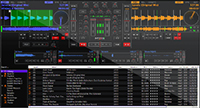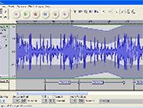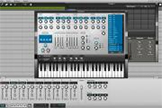-
It’s certainly a brave new world. When I started electronic music studies in 1980, equipment was very expensive and clunky. Almost everything was analog. Professional studio multi-track recorders required analog tape that were 2″ wide. Polyphony was rare, usually synths were monophonic, meaning you could only play one note at a time. Computers could only produce the most rudimentary sounds and required a lot of programming to get you there. And all of us, then, were excited by the, to us, new technology. But things have change dramatically. First, the explosion of digital sampling and MIDI implementation, and now with the internet and the advancement of computer technology, people have, within a click of the mouse, an incredible world of music making tools!
Future articles will discuss the rudiments of electronic music, music production, and some music theory, but for this introductory article, I want to give those that are new to electronic music some tools to dive into your own exploration and discover for yourself the exciting world of electronic music production! As I contemplated this article, I decided that I wanted to share four different programs that come from four different angles of interest, from the DJ to the composer, and on to the synthesist or sound designer. There are literally thousands of music programs out there, but for the purposes of this article, I will focus on software that you can download for free, is available for multiple operating systems, stable, easy to use, as well as being free and open sourced software. So, if your a computer programmer, you can actually manipulate and enhance the software. All of these programs have a great community of online resources and documentation, so let ’em know of your interests and help build the next generation of electronic music.
Here are the four free computer programs that are great whatever your musical endeavors might be. There are many other incredible programs out there, so please don’t limit yourself, search out the programs that might work best for your particular interests.
1. “Mixxx” is based on the DJ mixer interface. A wonderful tool for the laptop DJ that features BPM detection, broad format and MIDI support, four samplers in addition to the two main decks, a microphone input, and is loaded with lot’s of other cool features. This program has a very large online community, so updates and improvements are happening all the time. Go to http://mixxx.org/ for a free download of the latest version.
2. “Audacity” is a multi-track audio recording program. Sound Force has been at this one for a long time and is probably the most popular free sound editor available. It features the ability of adding effects, multiple format support, and very easy to use interface. Go to http://audacity.sourceforge.net/ for a free download of the latest version.
3. “Audiosauna” by Naive Solutions is probably the best introductory to get an idea of a standard virtual studio interface. It is a web based application and you only need your computer and an internet connection. You can use you computer keyboard for note input and the user interface is extremely standard and would prepare you for more complicated programs if you want more power and control over your sound. It allows you to record multiple tracks of two virtual synths and even load your own sound files into a sampler. It is extremely easy to use and is a great for beginners. It gives you the basic standard tools to create electronic music. They are working on MIDI implementation, but for now simply use your computers keyboard to play the instruments. There is a bit of lag time and some glitches in the sound engine when you use the program on the internet, but it is in the beta stage, so this is to be expected. Well worth checking out at http://audiosauna.com.
4. “Virtual ANS” is whole different direction. Quite a few years back I discovered a simular commercial program, which is still available, called Metasynth and I had great fun creating unique sounds with it. This program, though not quite as involved, is a program that uses graphics to create sound or vise versa. It’s great fun to draw music and experimenting with imported images, or maybe you want to record a sound and see what it looks like as a sonogram. For a free download of the latest version go to http://warmplace.ru/soft/ans/.
In conclusion, I hope this is a launching point for you to discover your own creativity in electronic music . Stay tuned for more aticles with descriptions of theory and application of sound production as well as the ‘break down’ of the physics of sound and other resources that may help you discover the world of electronic music.
©2014 Owen, M




